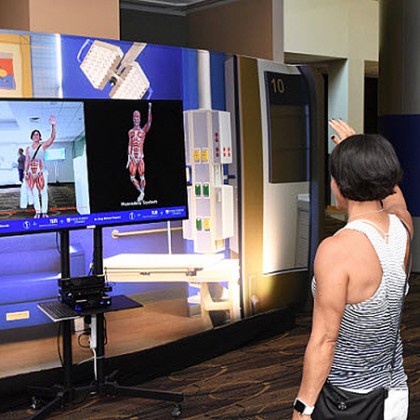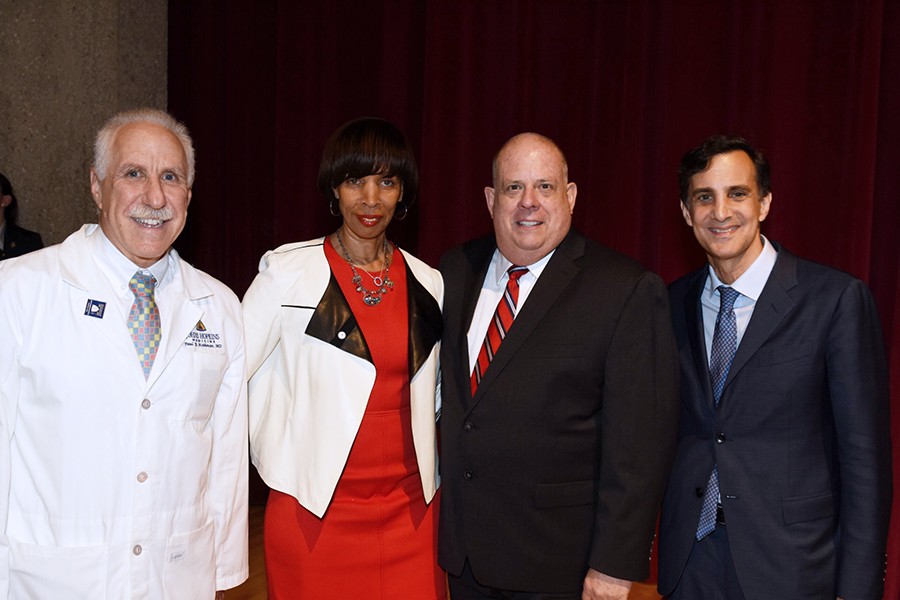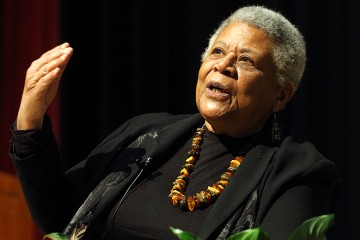From the day the Johns Hopkins University School of Medicine opened its doors in 1893 to 18 students—three of them women—it has pursued a mission to create a worldwide legacy of education, research, and patient care.
To celebrate that 125-year history, hundreds of faculty, staff, students and alumni came together on June 1 in Turner Auditorium on the East Baltimore campus for an anniversary symposium that featured remarks from university leaders and elected officials, as well as video highlights recounting the medical school's impact in Baltimore, the state of Maryland, the nation, and the world. The symposium was one of several events planned for the School of Medicine's 2018 reunion and alumni weekend.
Speaking on the theme "Where Tradition Meets Innovation," Johns Hopkins University President Ronald J. Daniels and Paul B. Rothman, dean of the medical faculty and CEO of Johns Hopkins Medicine, shared what distinguishes the institution from other academic centers: pioneering research that has led to treatments for conditions such as sickle cell anemia, Lou Gehrig's Disease, and Marfan Syndrone; a medical curriculum for students that, from the very beginning, has offered hands-on training in the lab and at the bedside; and curious faculty members who have earned international recognitions such as the Nobel Prize and Lasker Awards.
Video credit: Johns Hopkins Medicine
In more recent years, Johns Hopkins physicians and scientists have been responsible for medical and scientific breakthroughs, including the development of a lifesaving infection prevention checklist, a five-way kidney transplant, a bilateral arm transplant, cancer immunotherapy, and advances in understanding the Zika virus' relationship with microcephaly.
Rothman spoke about feminist and philanthropist Mary Elizabeth Garrett's role in Hopkins history. Garrett, he said, contributed the final and largest portion of funding needed to establish a medical school on the condition that women be admitted to the school.
Reflecting on his tenure as dean and CEO, Rothman called the institution unique. "I've been here for six years and it's the only medical center I know of where the word 'cure' is used not randomly, but often, because that's our goal: to cure human suffering and diseases," he said.
Daniels added: "The Johns Hopkins School of Medicine has never lost sight of the deeply humane objectives that William Welch and his fellow founder and successor as dean, William Osler, committed to 125 years ago: to pursue discovery in the advancement of human welfare, or more simply with focus always on the patient. ... From this core principle have emerged discoveries ranging from the targeted use of radiation to treat cancer, to the modern pregnancy test to the creation of the field of medical genetics, which now provides the foundation for our Genes to Society curriculum—the embodiment of the schools' commitment to reimagine medical education in the 21st century."

Image caption: Also on display during the anniversary symposium was an augmented reality "magic mirror" that allows users to obtain a virtual view inside their own bodies
Image credit: Robert Smith Photography
Also participating in the program were Maryland Gov. Larry Hogan and Baltimore City Mayor Catherine Pugh, who spoke about the state and city's partnership with Johns Hopkins, the largest private employer in Maryland.
After going through a list of how the state supports health care, Hogan thanked Johns Hopkins for its collaborative efforts to expand health care access and affordability to improve the quality of life for Marylanders.
Pugh praised Johns Hopkins for its partnership on programs such as one that promotes healthier babies and another that provides free eye exams and eyeglasses to students in need. Calling health a "critical lever for social justice," she challenged the School of Medicine to work toward more innovative ways to tackle opioid addiction.
During the symposium, six Johns Hopkins Medicine leaders were honored with commemorative portraits that will remind future generations of their legacy at Johns Hopkins. Portraits of William A. Baumgartner, Gary W. Goldstein, Karen B. Haller, Michael J. Klag, Ronald R. Peterson, and James L. Weiss were unveiled and are part of a collection of approximately 360 commemorative portraits of individuals associated with the major health entities of Johns Hopkins.
The symposium also included a presentation of alumni awards and a pop-up museum of black and white pictures of the institution's most renowned researchers paired with tidbits of history. Items on display include founding professor William Stewart Halstead's top hat and surgical kit, founding professor William Welch's microscope and suitcase, and an augmented reality "magic mirror" that allows users to obtain a virtual view inside their own bodies. The pop-up museum is open on the southern corridor of Turner Concourse through October 2018.
Posted in Health, Science+Technology, University News









